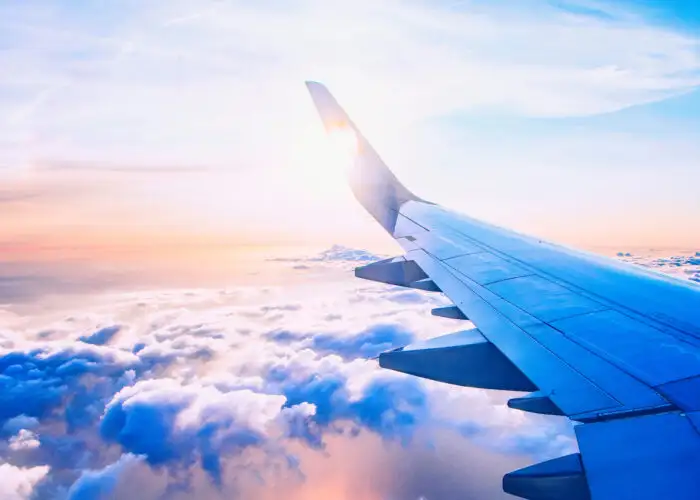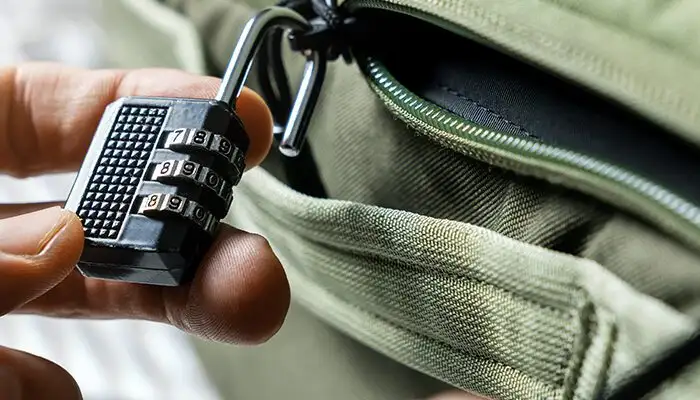Consumers are barraged with special offers. And no segment of the universe of buyers is more relentlessly pursued by sellers than frequent flyer program members.
Indeed, that’s part of the marketing power of rewards programs?they generate a repository of actual and potential customers who the airlines and their partners can selectively target with special offers.
Like marketing promotions in general, some mileage offers truly add value to the sales proposition; some are innocuous from a value standpoint; and still others tilt toward the rip-off end of the scale.
Following is a list of several representative types of special offers, with some thoughts and personal anecdotes on how they should be approached.
The airlines’ marketing materials typically use the term “celebrate” (as in, “to celebrate the launch of new service between Akron and Bangor…”), but the reality has more to do with desperation than celebration. Airlines routinely deploy bonus miles to generate awareness, but mostly to sell seats on new routes, which can be slow in reaching profitability. These are limited-time offers, usually for three months or less.
In most cases, the proffered miles?which may be double or triple the actual flight miles, or a set number of extra miles?amount to a net gain for the consumer. As a new entrant, the airline will have no choice but to match incumbent airlines’ fares, so the traveler won’t pay any price premium to earn the miles.
There can still be trade-offs, however.
The downside, for instance, may be a shift in allegiance away from one’s primary airline in order to earn a bonus in another carrier’s program. In a practical sense, miles earned in a secondary program (a program in which you participate infrequently, and thus may never reach an award threshold) have less value than miles earned in one’s primary program.
Another possible trade-off: comfort and convenience. As an example, American recently offered double AAdvantage miles on its new Los Angeles (Long Beach) – New York (La Guardia) service. As I was scheduled to travel from Los Angeles (LAX) to New York City during the promotion period, the double transcontinental miles caught my attention. The drive to Long Beach is 20 minutes longer than the drive to LAX, so that entered into the analysis. But what ultimately turned me away from the miles was the aircraft variable. American flies narrow-bodies from Long Beach, versus the twin-aisle B767 from LAX. On a five-hour flight, the spacious plane outweighed the extra miles.
But that’s just me. Someone with a lower claustrophobia quotient might have switched to the Long Beach flights and pocketed the extra miles, without feeling particularly deprived by the tighter quarters.
Internet service providers, banks, telecom companies, credit card companies, and many other businesses use frequent flyer miles in their customer-acquisition efforts.
Credit card companies in particular covet frequent travelers, with their upscale demographics and big-spending ways. So it’s no wonder that co-branded cards, offered jointly by issuing banks and airlines, often come bundled with generous mileage offers.
Case in point: As we go to press, United is offering 15,000 bonus miles to new Mileage Plus Visa cardholders after the first purchase, plus a $25 United Discount Travel Certificate and a one-way, 1,000-mile one-class upgrade certificate.
By any standard, this is a generous offer. But it’s not for everyone.
First and foremost is the usability question: Of what value are United miles to me? While 15,000 miles is a good start, I’d still need another 10,000 miles to reach a meaningful reward level. Is that an attainable goal?
Then there are the specific terms of the credit card. The annual fee is $60, and the annual percentage rate is 14.65 percent (variable, Prime + 9.9 percent). Since there are credit cards available with no annual fee, it could be argued that in effect you’re buying 15,000 miles for $60, or .4 cents (four-tenths of a cent) per mile. That’s good value…again, assuming you can boost that initial balance to 25,000 or more miles.
One of the newer wrinkles on the face of rewards programs is the combining of money and miles for goods and services.
MilePoint allows members to use their miles for a discount?typically 10 percent?at participating retailers. The miles are redeemed for two cents each, a solid if unexceptional value. The caveat in this case involves alternative vendors. Before committing miles to receive a discount through a MilePoint retailer, be sure you’ve checked prices at non-MilePoint vendors. The latter may be routinely offering comparable discounts, in which case you’ll pay the same or less, and save your miles for another day.
On the airline side, Northwest regularly sells tickets for various combinations of cash and miles. Example: a round-trip business-class ticket between Los Angeles (LAX) and any of 14 Asian destinations is currently available for 15,000 WorldPerks miles plus $1,700.
According to Orbitz, a Los Angeles (LAX) ? Tokyo (Narita), Japan, round-trip flight can be purchased for $2,911. So in the cash-plus-miles scenario, those 15,000 miles have an effective value of 8.1 cents each. While the offer checks out on a cents-per-mile basis, a better overall value might be to purchase a coach ticket and use miles to upgrade.
As frequent-flyer programs have widened their scope to become frequent-buyer programs, mileage-earning opportunities have expanded to include a large spectrum of goods and services. It is the rare purchase indeed that cannot be made in mile-earning mode.
Among the airlines, the Northwest WorldPerks Mall and US Airways Dividend Miles Shopping Mall offer the most extensive choices, allowing consumers to earn at least one mile for every dollar spent at more than 50 online retailers.
And independent ClickRewards does much the same, awarding ClickMiles for purchases made through network e-tailers. Once earned, the ClickMiles can be redeemed 1:1 for miles in either the American AAdvantage or US Airways Dividend Miles programs.
As it happens, I am in the market for new cookware, for which I’ve budgeted $500. Naturally, I plan to charge the purchase on an airline-affiliated credit card, earning 500 miles into my primary mileage program. If possible, I’d like to earn miles directly from the retailer as well.
Having found a suitable set of high-end pots and pans, I compared prices at various merchandisers and determined Cooking.com’s prices to be competitive with those of other retailers. Cooking.com also participates in both ClickRewards and the WorldPerks Mall, so my options are as follows:
| Vendor | Merchandise Price | Miles Earned |
| Cooking.com | $499 | 0 [1] |
| “ | “ | 499 [2] |
| “ | “ | 3,992 [3] |
[1] Direct
[2] Through ClickRewards, awarding one mile per dollar
[3] Through WorldPerks Mall, awarding eight miles per dollar (special promo)
Since there’s no difference in price with or without miles, it would be downright irrational to make the purchase without earning at least 499 miles through ClickRewards. But with Northwest’s holiday-shopping bonus in effect, the hands-down value winner would appear to be the 3,992 miles available through the WorldPerks Mall.
But once again, it comes back to the utility question. I don’t collect Northwest miles, so those 3,992 miles might never grow to maturity. On the other hand, the 499 ClickMiles can be exchanged for American AAdvantage miles, which I do collect.
If you’re not paying extra for the miles, as in the above example, go for ’em. But it sometimes comes down to a choice between a rock-bottom price without miles and a higher price with miles.
If the item you wish to purchase is available elsewhere for less, but without earning frequent flyer miles, divide the price difference by the number of frequent flyer miles you would earn for buying from the more expensive retailer. That gives you the cost-per-mile price. If you’d be paying more than 2¢ per mile, ask yourself whether you’ll be able to recoup that investment when it comes time to redeem the miles.
The bottom line: Your mileage may vary
There’s another dimension to that variability worth mentioning: personality.
Frequent flyer miles are, when all is said and done, a rebate. And some of us are more obsessed with rebates than others. Those with a coupon-clipping disposition sign up with whatever phone company is offering the most miles, and then switch as soon as possible. They’re continually shuffling credit cards to qualify for the latest promotion. And they would certainly choose to earn 3,992 miles by purchasing their kitchenware through the WorldPerks Mall.
Marketers refer to promotion-driven consumers as flippers, and to the turnover among customers as churn. Ironically, while mileage programs can engender long-lasting loyalty among some consumers, they foment churn among others. In fact, in dollars and cents terms, the flippers are the winners in the race to squeeze value from the programs.
But intensive flipping and double dipping require time and effort.
Remember the Pudding Guy? David Phillips received his 15 minutes of fame by cleverly leveraging interlocking discounts and mileage offers to earn more than a million miles for 12,150 cups of Healthy Choice pudding. At the end of the day, he spent $3,000 to earn roughly $20,000 worth of free tickets.
But as Mr. Phillips was the first to acknowledge, he devoted many hours to crunching numbers, strategizing, and executing his plan.
As I said to him at the time, I admire his energy and focus. Like him, I enjoy the challenge of earning miles. But it’s not the primary focus of my life. And, given my personality, it never will be.
But again, that’s just me.
We hand-pick everything we recommend and select items through testing and reviews. Some products are sent to us free of charge with no incentive to offer a favorable review. We offer our unbiased opinions and do not accept compensation to review products. All items are in stock and prices are accurate at the time of publication. If you buy something through our links, we may earn a commission.
Related
Top Fares From Columbus, OH
Today's Top Travel Deals
Brought to you by ShermansTravel
Shop and Save with Country Inns...
Patricia Magaña
 Hotel & Lodging Deals
Hotel & Lodging Deals
$229 -- Chicago: Discounted Rates and...
Francesca Miele
 Hotel & Lodging Deals
$229+
Hotel & Lodging Deals
$229+
$188 -- Honolulu: Save on Oceanview...
Abigail Lamay
 Hotel & Lodging Deals
$188+
Hotel & Lodging Deals
$188+






